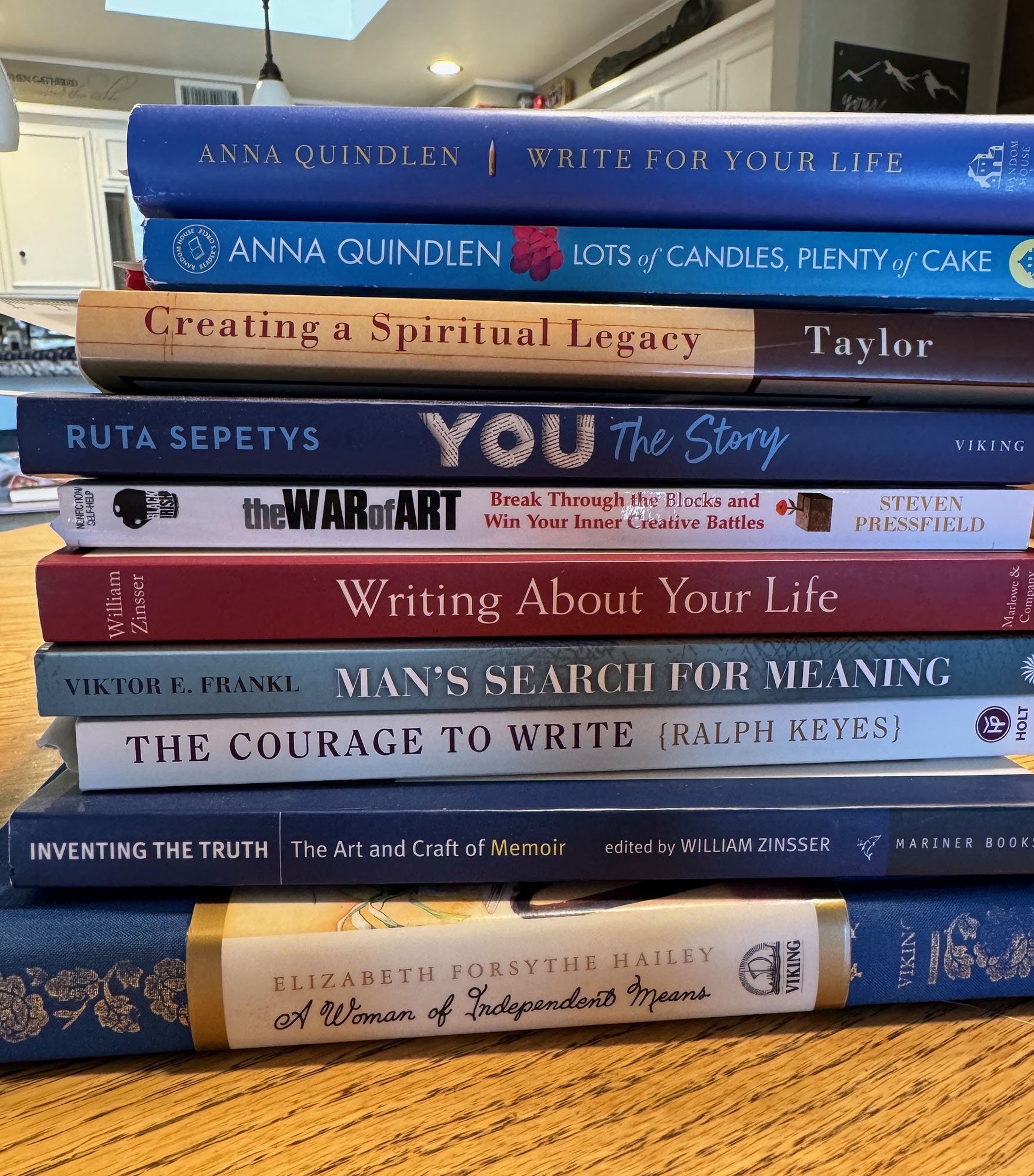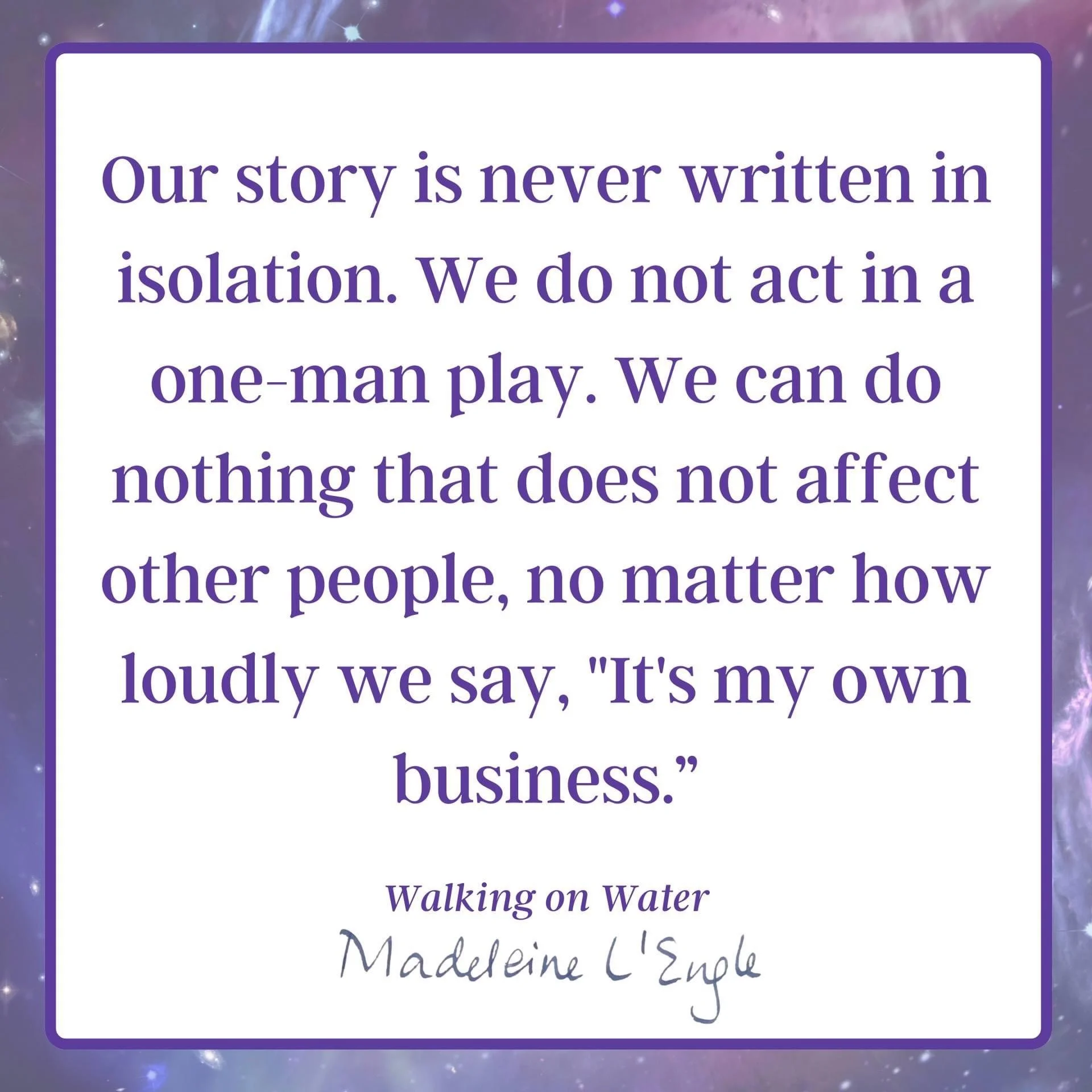Stories Worth Telling
Almost half of the Bible comes to us as story. Narrative form contains significant particulars of a person’s life. The events that surrounded each person’s life and shaped their character make their life lessons accessible to readers.
The goal of storytelling is to enable people to see how pieces fit, to make sense of what happens. No storyteller can tell the whole story at once. He or she makes decisions about what to record first, then next, and after that.
A storyteller structures the story, creating a spine and then putting meat on the bones so that the message comes alive. If the story has heart and a soul, people can feel the insides, the gut, the blood stream pulsing and the lungs breathing so that readers or listeners engage and relate somehow.
Human beings are wired to respond to story, and naturally we want to know how stories turn out. We want closure. We search for resolution.
Let’s Talk about You
We tell ourselves stories. The most important stories are the ones we tell ourselves about our own life. Everyone has stories worth telling themselves. Stories that continue to interest, to instruct or caution, these keep us circling back.
Writer, teacher, literary critic William Zinsser’s wrote about memoir, “You are the custodian of your memories and they are perishable.”
Your memories contain your story.
retrospect––n. contemplation of things past; v. look back upon (a period of time, sequence of events); to remember
If someone were to ask you about your life story, where would you start?
Would you start from today and look back? Or would you start at your beginning, from when you were born?
Would you begin explaining relationships? To your parents? Siblings? Teachers? Friends?
Would you want to talk about your childhood and adolescence? The place where you grew up? Or have the years since high school and college proved far more interesting?
Would adult years that may include a spouse and children emerge as the most significant part of your life story? Or maybe you would want to tell about your career, where it’s taken you. Or focus on people who have made a difference in your life.
What about your life might make your stories interesting or helpful to someone else?
No matter where you or I start our story, every story inserts itself into the over-arching Story already in progress.
Decisions as to when and how to introduce characters as well as supply descriptions that enhance the narrative will distinguish the best stories. Stories that keep a reader or a listener interested. Stories that engage, instruct or caution make the world go round!
Story-Telling Arts and Craft
While stories that unfold chronologically are the easiest to follow, too many details and dates and names will bloat a story. Listeners and readers have a narrow bandwidth of interest. Tantalize rather than tire.
Try telling parts of your story first to yourself. Ask: Why do I keep remembering these same stories? What makes these scenes from my life perturbing or enlightening?
When repeating a story, look for signs of disinterest. Eyes glaze or else the person you tell starts glancing past your shoulder. The listener begins to fidget, comes up with an excuse to leave, or else interrupts your story to tell his own.
“People are interested only in themselves. If a story is not about the hearer, he will not listen. And I here make a rule – a great and lasting story is about everyone or it will not last. The strange and foreign is not interesting – only the deeply personal and familiar. ”
If engaging someone to listen to your story when you have visual cues to gauge interest, think how much harder it is to write a story that compels readers to follow a trail of breadcrumbs that will lead to a satisfying ending.
Deeply Personal
Which has led me to tell at least some of my story, beginning in my childhood. The work of owning my story has forced me to reframe my story in order to move toward healing and integration of traumatic events that occurred during the years (birth to age 20) when my brain was most malleable. [1]
“Whenever hard things activate us, our bodies are showing us they want to move toward healing and integration. . . [my own] tendency to over-accommodate whenever someone has expectations of me . . . is because when I was a child, expectations were fraught with pain and shame.”
The above quote offers a clue to how and why I behaved as I behaved, because at the time I believed as I believed. As a child, my wounds were not validated by a caring adult when I most needed care.
What I believe now . . . the traumas I experienced in childhood make my story unique. I am the only one who can tell my stories. I am not trying to reconfigure my story in order to find someone to blame, or to mitigate guilt or consequences for troubles I brought on myself.
Though often writers encounter protest or push-back from others in their story who object, saying that’s not what happened or that’s not how things happened. Writer Marion Roach (memoir coach) says, “That’s not how it happened for you, maybe. But this is how it happened to me.”[2]
“Memoir is about something you know after something you’ve been through.” Marion Roach
Writing validates emotions and experiences using words. Words can carry the weight of unresolved conflicts. I have found from writing in journals for years, I would write it out––whatever was bothering me––and then suddenly think, that’s not it at all.
“That is not it at all,
That is not what I meant, at all.”
––T.S. Eliot, The Love Song of J. Alfred Prufrock, [3]
Relieving the pressure and often the pain, a new perspective freed me from anger, fear, grief, resentment or guilt. I often discovered I can forgive myself too.
Again, I quote Aundi Kolber. “For years I didn’t believe my experiences were ‘bad enough’ to count, so I didn’t see myself as a survivor of trauma . . .[or understand] how significant it is to experience trauma in childhood––and how it can affect us long after.”
In the age of tell-all memoir, my story may not be “bad enough” and yet it was bad enough for me to realize that survival itself attests to the powerful hand who brought me through ordeals, experiences, and traumas that could have at any time marked the end of my story.
Our God is a God who saves; from the Sovereign LORD comes escape from death. Psalm 68:20
As an adult, I can recognize choices I didn’t have as a child. That’s the main difference. And the same applies now to any distressing situation or a traumatic experience.
I can see. I have choices. I have agency to make different choices.
Once a person understands the sources of pain, recognizes what triggers physical and emotional response, they can navigate through difficulties, chart new courses rather than numb, or deny, or try to escape personal responsibility.
Forward from Here
So, did I set out to write this post?
Not really. But that’s what writing does, or at least what writing has done for me. It takes me on a journey through story, noting signs, scenery, recalling conversations, and seeing the faces of those who populated each story.
And I bet you can tell your own stories too, including scenes that would help you connect the dots to find meaning and purpose in your life story.
The value of story lies open for those willing to learn, especially from their own mistakes, and then do the work needed not only to survive this life but to thrive in the midst of it.
“I believe that there is one story in the world, and only one. . . . Humans are caught—in their lives, in their thoughts, in their hungers and ambitions, in their avarice and cruelty, and in their kindness and generosity too—in a net of good and evil. . . . There is no other story. A man, after he has brushed off the dust and chips of his life, will have left only the hard, clean questions: Was it good or was it evil? Have I done well—or ill? ”
Readers, If you like what you read on this website, forward a favorite post to a friend. If you haven’t already, please subscribe.
Thanks for spending time here on Footnotes2stories.
[1] Try Softer, A Fresh Approach to Move Us out of Anxiety, Stress, and Survival Mode––and into a Life of Connection and Joy, by Aundi Kolber
[2] https://marionroach.com
[3]https://www.poetryfoundation.org/poetrymagazine/poems/44212/the-love-song-of-j-alfred-prufrock




